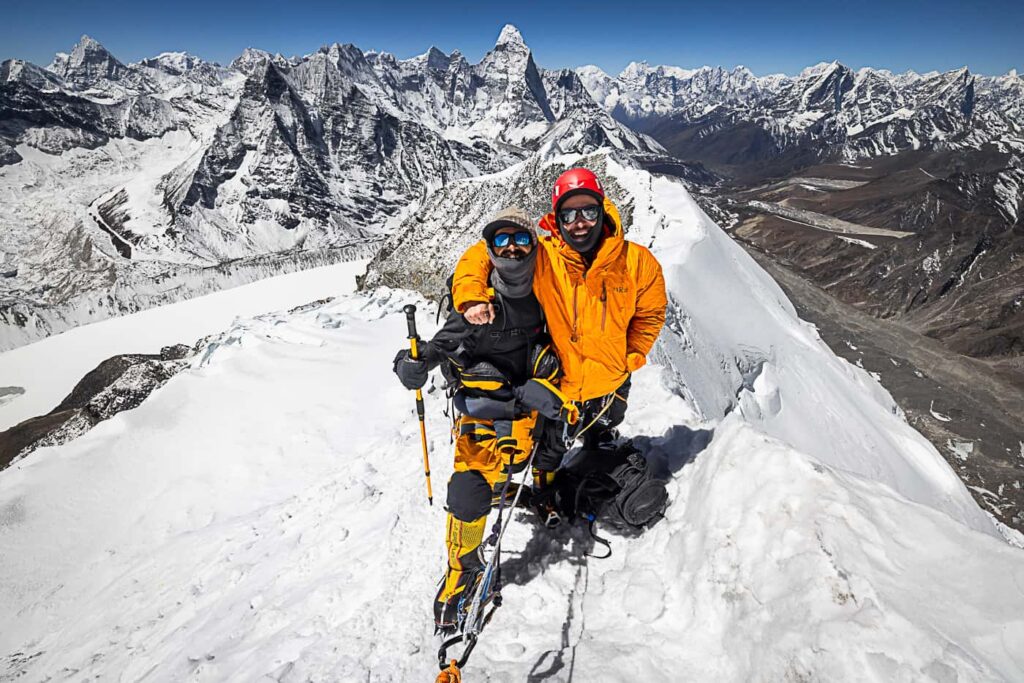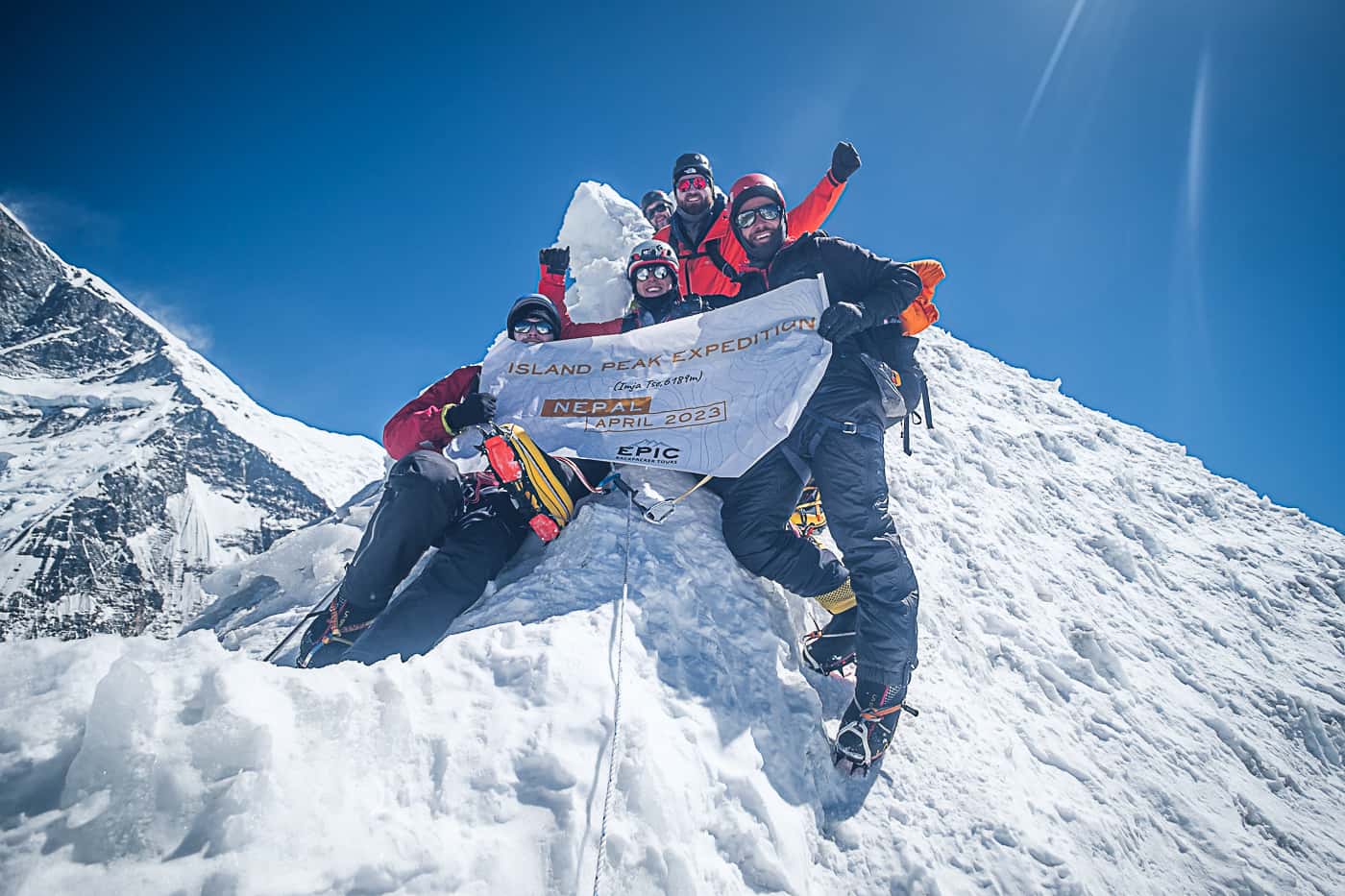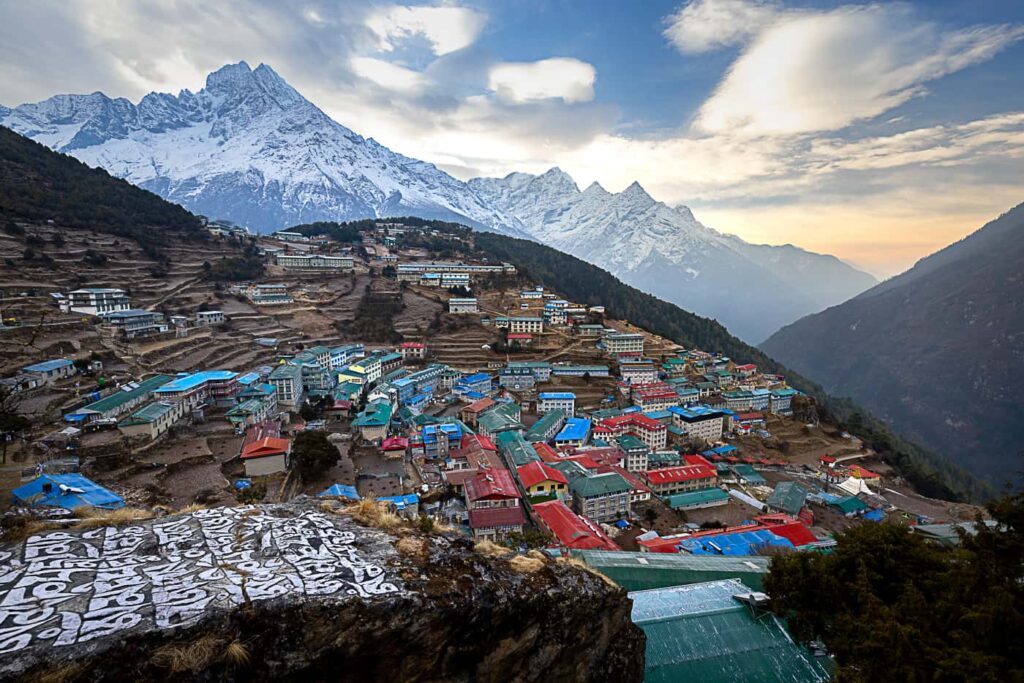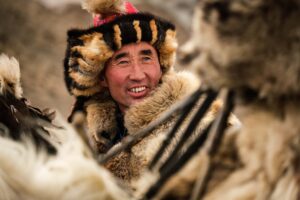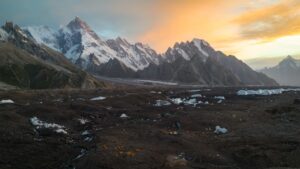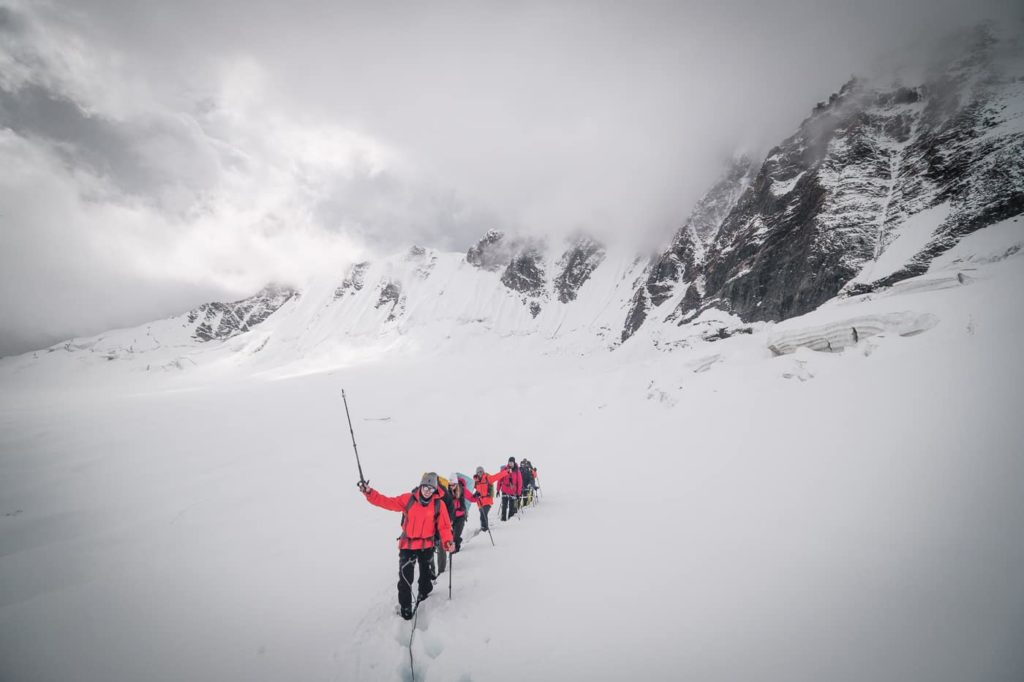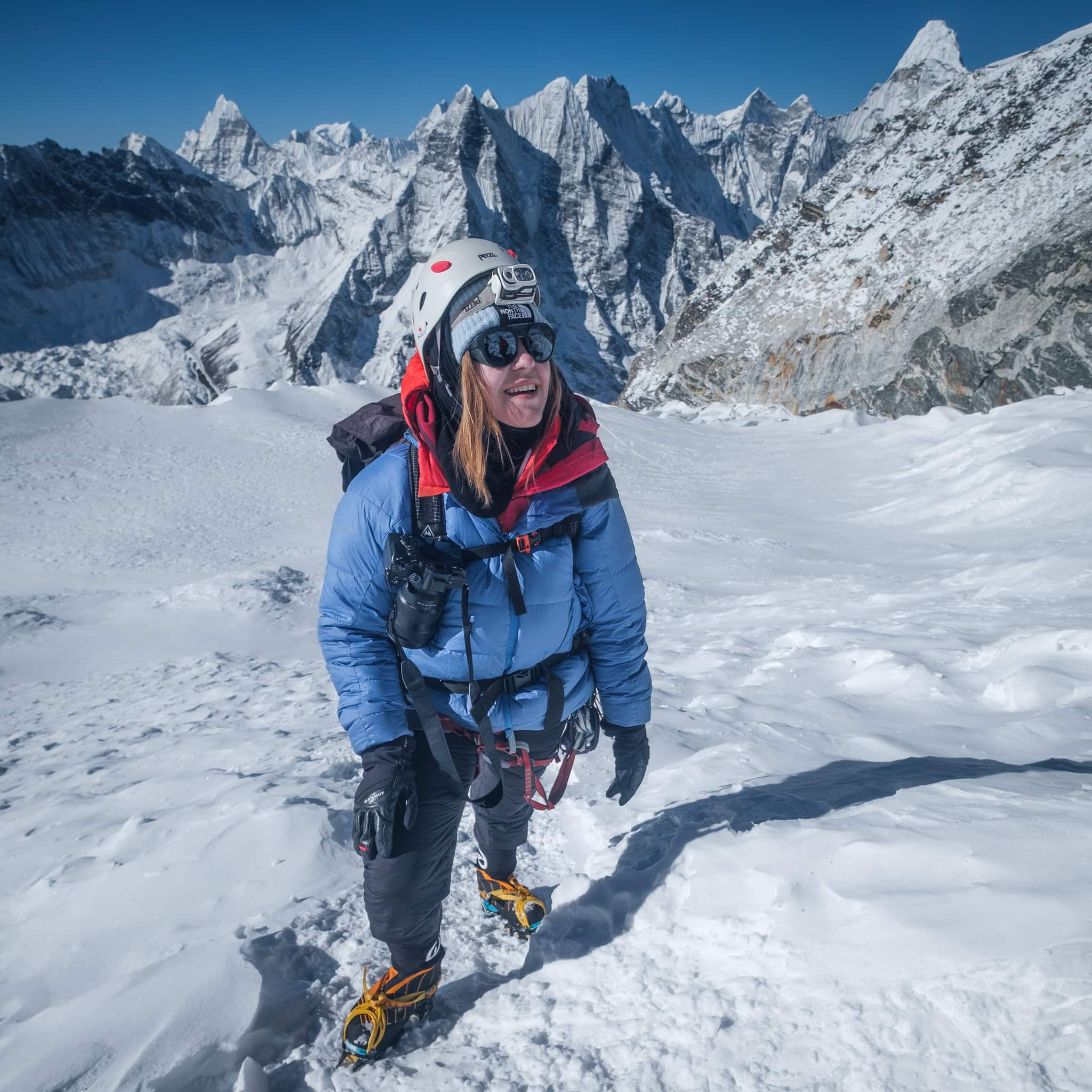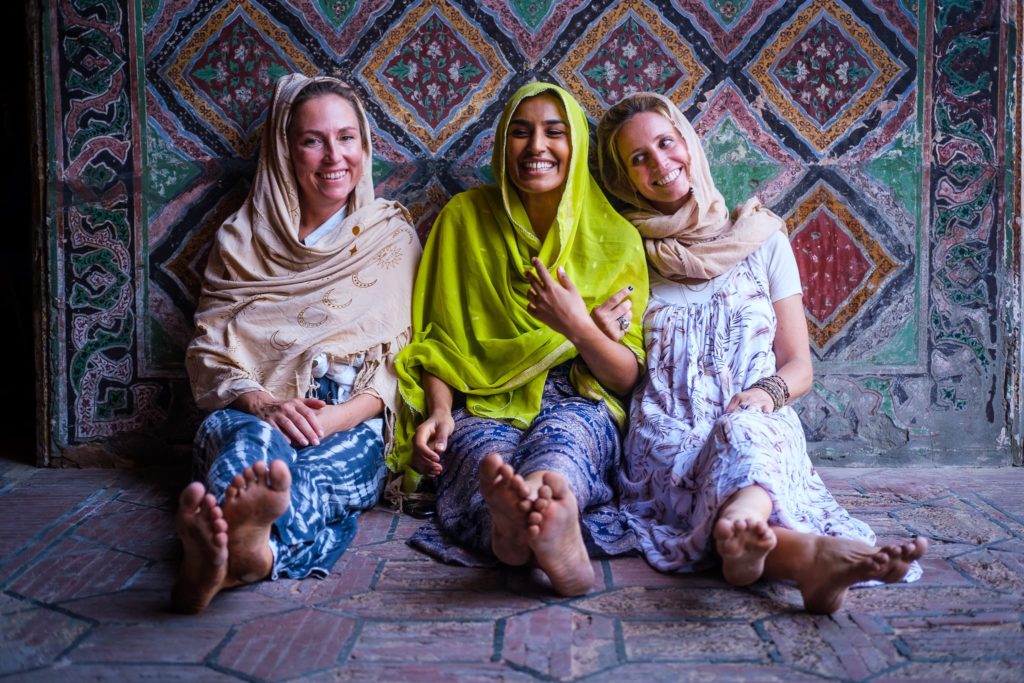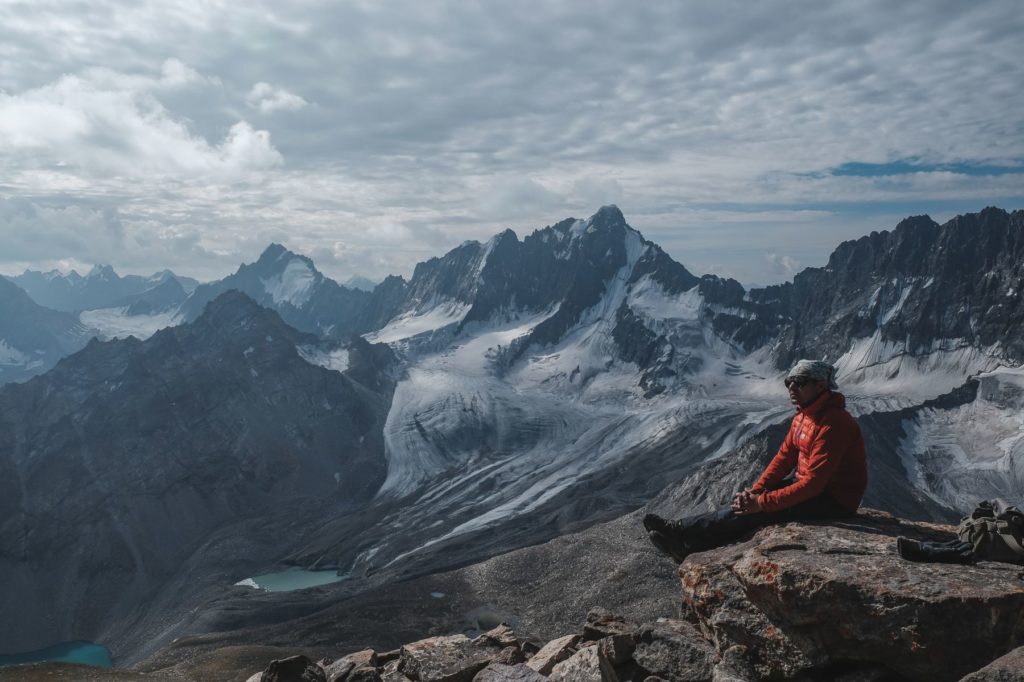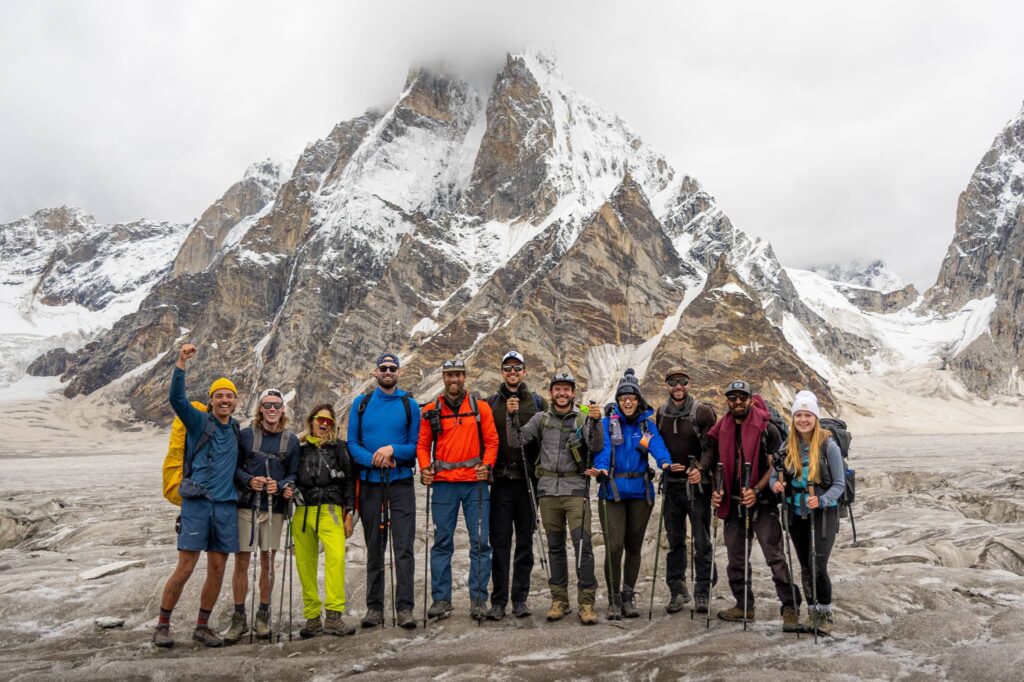Island Peak (6189m) – called Imja Tse in the the local language – is known as once of the great introductory 6000 meter peaks in the Everest Region of the Himalayas.
Though it has a reputation and classification as a “trekking peak”, don’t be fooled. Climbing Island Peak offers a real challenge that goes well beyond your standard trek. The average person who shows up to Island Peak expecting an easy jaunt up a hill is in for a rude awakening.
That being said, climbing Island Peak is a very accessible way to dip your toes into the world of mountaineering in the Himalayas. With the right preparation and mindset, attaining the summit is very achievable for people with good fitness and basic climbing skills.
We get asked all the time here at Epic: how difficult is Island Peak to climb? Below, we tackle this question as we go over some of our top tips and expert advice to consider before you set off to bag this classic Himalayan Peak.
Managing the Island Peak Height and Altitude
The inherent challenge that comes with climbing this peak lies with the Island Peak altitude. At 6189 meters above sea level, there is less available oxygen in the air and movements that feel easy lower down, feel difficult when you are operating at such a height.
The key to managing the altitude is going slow and being able to maintain a slow pace. Having a good acclimatization plan in place will go a long way in ensuring that you have a solid shot at the summit.
The typical Island Peak Itinerary should allow for plenty of time for rest or “zero” days, meaning you will have to stay put at various points on the trip in order to allow your body to adapt to the thin air.
Having a few days to rest in the villages of Namche Bazaar (3500m) Chhukung (4730m) is very important.
Signing up for a “rapid ascent” program without the proper acclimatization is a recipe for disaster. Take your time with the process. Altitude is not the sort of thing that can be rushed. Plus the journey through the many Sherpa villages en route to Island Peak Base Camp is a huge part of the experience of this journey.
Choose the Right Gear for Island Peak
At first glance, the Island Peak packing list can be quite daunting.
One needs a lot more gear than required by an ordinary trekking trip.
The most important items that will determine your success on the peak come down to 6 things:
- 6000m Boots: Probably the most expensive item on the list. We recommend using La Sportiva G2 SM boots or the Scarpa equivalent. Regular hiking boots, as opposed to mountaineering boots, may not suffice Note that we help our clients rent these boots in Kathmandu if they choose not to buy a pair of their own.
- Summit jacket: While you might get warm climbing up the steep sections en route to the summit, you will want a heavy, warm down jacket.
- Gloves: Typically people have the most trouble choosing appropriate gloves. There are so many options out there! Choose a sturdy, full-fingered, well-insulated Gore-Tex model that still allows for some finger dexterity so you can change/operate your jumar and belay device. The balance you are looking to achieve involves warmth and dexterity; you want the maximum of both.
- Head Torch with Rechargeable Battery: This is an important item because you will likely start your climb in total darkness around 1 or 2 in the morning. Bring a backup battery in case you need it.
- -20 C Sleeping Bag: While you will only have one night in a tent for Island Peak, you will be using the sleeping bag nearly every night at the tea houses. A warmer sleeping bag will ensure you get the rest you need to be successful on the expedition, so don’t skimp on sleeping bag warmth!
- Polarized Sunglasses: Glacier glasses or the equivalent are without a doubt one of the most important items you need to pack for this climb. Protect your eyes against the high-altitude ultraviolet rays and snow reflection at all costs!
If you are planning more adventures in Nepal, check out this ultimate Nepal Packing List.
Island Peak Difficulty: The Truth
For some reason, Island Peak has the reputation for being an “easy” 6000-meter peak. Let me break it to you – no 6000-meter peak is easy, simply because the height makes it more challenging than a mountain in the 3000 meter range.
This myth about Island Peak is not helped by the fact that it is classified by the Nepali authorities as a “trekking peak”.
Let’s set the record straight; while not overly technical, basic climbing skills like rappelling and the use of a jumar are essential and used for a significant period of time during the climb. If you have never done either before – that is ok (though doing some training beforehand is recommended if it is possible for you) – our expert guides give a few training sessions before the climb so that you can approach the summit with the necessary skills.
The fact that you get to use all of these new skills during the climb itself is one of the main reasons why Island Peak is such a good intro 6000-meter peak; it paves the way for the possibility of more technical and demanding climbs at altitude while giving you the experience of doing some real climbing in the field.
The below photos show our clients training a few days before our summit attempt.
How Long Will It Take To Climb Island Peak?
The second aspect related to the Island Peak difficulty question is the length of the summit push.
Depending on the conditions on the mountain, the summit push can be long. On average, our clients take between 11-14 hours from base camp to the summit and back to base camp. It might be possible to do the whole climb in 8-9 hours if the conditions were absolutely perfect and the individual had a very high level of fitness.
Having good endurance fitness is crucial to ensuring you have enough “gas in the tank” to complete the climb.
The total trekking days required to trek into base camp and then climb the actual peak, then trek back out again is around two weeks minimum.
When is the best time to climb Island Peak?
Island Peak can be climbed during three seasons: spring (March-May), fall (October – November), and winter (December – February).
The exact best time to climb Island Peak is debatable – but the consensus is that either spring or fall is best. Fall time is the busiest season, while spring tends to bring the chance of more unpredictable weather.
During our climbs during the spring, we experienced excellent weather, with full sun present almost every morning of the trip.
Though it varies each year, the fall season typically sees slightly better conditions on the mountain; ie less rock and ice and more snow in the jumar/rappelling sections.
What is the vibe of Island Peak Base Camp?
Located at 5300 meters, Island Peak Base Camp is a picturesque fixed site run by a dedicated seasonal Sherpa staff that serves as the launch point for most expeditions attempting the peak.
Here, you will find all of the classic comforts of a fixed base camp including large tents with proper mattresses in them – which are usually shared with another member of your team. The staff at base camp cooks your meals and serve unlimited tea before and after the summit push.
There are drop toilets here too, so the area is kept pretty clean and devoid of people going to the bathroom behind every rock!
In the spring, there is no consistent water source here, so the base camp staff must carry loads of water each day from a few kilometers a way. This is just one reason to tip the Island Peak Base Camp staff well!
What are the average temperatures at Island Peak?
Spring: Temperatures at Island Peak Base Camp are around – 10 c at night, potentially a little colder. During our recent spring (April) summit push, we had no wind at all and got quite warm climbing up the steep hill to the crampon point. This is why layers are key! Dawn brought chilly temps and a slight breeze. As there is a bit of standing around and waiting for people to put on their crampons and everything, dawn was probably the coldest part of the climb.
Because we had a bluebird sky summit day, the summit was actually quite hot. Most of the team shed their heavy down jackets in favor of lighter shell jackets on the summit.
Fall: October and November tend to be a bit colder than spring months. There can be more snow present but quality 6000-meter boots are still more than effective at keeping your feet safe and warm.
It is important to pay attention to the wind forecast as that will be a factor in how cold it could potentially be on the summit.
On a clear day with little wind, expect the temps to be cold, but generally warm and pleasant during 10 am – 2 pm.
What is the rate of Island Peak Summit Success?
The Nepal Mountaineering Association does not keep track of summit success rates, but from our experience and what we heard from other expeditions over the years, the rate of Island Peak summit success is around 70%.
For most fit individuals, the only reason you would not summit would be if 1. you experienced altitude sickness so severe that you could not physically climb or 2. weather prevented/impacted the ascent.
It can not be over stated the importance of an Island Peak Itinerary that allows for a proper acclimatization period. If your body is acclimatized and you are feeling more or less good; then your chance of getting to the Island Peak summit is quite high indeed. All you need is a positive mindset and determination to keep moving up, and you shall.
Island Peak Route and Location
For much of the trek into Island Peak Base Camp, the route follows the famed Everest Base Camp Trek. The route splits at a village called Dingboche and the crowds seem to disappear around this point once you veer off towards Island Peak.
Base Camp for Island Peak is found roughly 3 hours away by foot from Chhukung Village. On the route to base camp, stunning views of Lhotse, Island Peak, vast glacier systems, and other towering peaks can be seen in every direction
In terms of the actual climbing route, there is really only one standard way to get up the mountain that every expedition follows. Some groups choose to use the High Camp (this sits around 5600 meters), which shaves a few hours off of the already long summit push.
We opt to not use the high camp as having access to a clean water source is not possible there, but will consider it in the future in order to have the chance to enjoy a slightly shorter summit push.
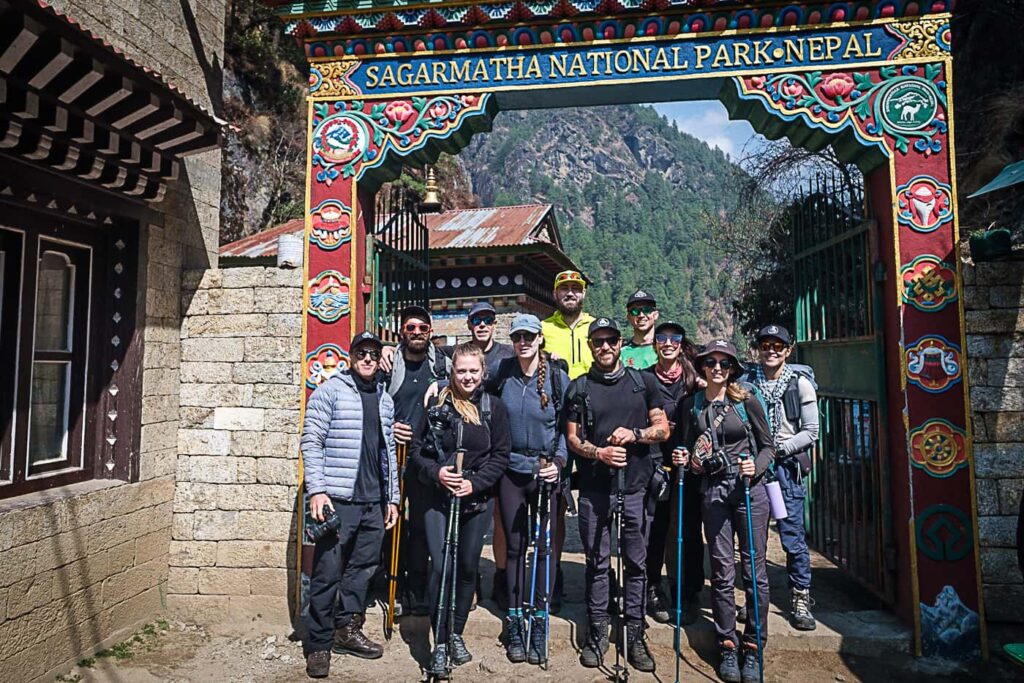
What is Accommodation like on Island Peak?
The majority of nights during the Island Peak climb and trek are spent at tea houses run by local Sherpa families. This means you have a bed and access to a toilet each night!
Showers and wifi are available sometimes too – which can fell like real luxuries out in the mountains.
Tea houses are a great part of the experience of trekking in Nepal and also allows for our members to get the proper rest they need along the route (some people just do not sleep well in tents).
The only point on the trip when staying in tea houses is not possible is at Island Peak Base Camp.
Island Peak Difficulty: Wrap Up
Our general feeling? Climbing Island Peak is one hell of a good time. If you are looking for a proper challenge and a fun introduction to high-altitude mountaineering, then Island Peak is a great “first”.
The Island Peak difficulty question should be clear to you now at least after reading this article and based on your own goals and fitness ability, you can now properly judge whether Island Peak is a good trip option for you or not.
The Island Peak climbing season is one of our favorite trips we run and when the time is right, we hope you get to join us for this truly once-in-a-lifetime adventure.
Please get in touch with our knowledgeable staff should you like us to elaborate on anything further about our Island Peak Climbing trip.
Happy climbing preparation all!

